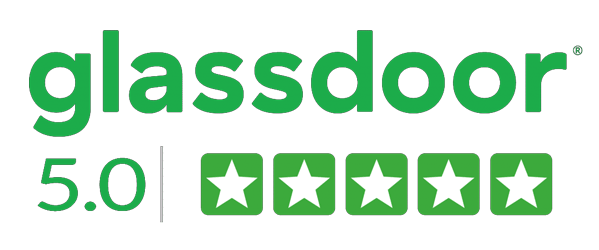
Are you a recruiter or HR professional eager to catalyze change within your organization? Have you ever found yourself navigating decisions without the support of concrete data? Your quest for impactful decision-making ends here! Embracing the mastery of HR metrics arms you with a potent arsenal of data-driven insights. Did you know that organizations leveraging data-driven HR practices are 23 times more likely to outperform their competitors in terms of profitability? With this knowledge at your fingertips, you gain the ability to make informed choices, optimize processes, and ultimately, drive unparalleled results.
In this blog post, we unveil a comprehensive toolkit of HR metrics meticulously curated for recruiters and HR professionals like you. Join us as we delve into these metrics, uncovering their potential to revolutionize your HR strategies and propel your success to new heights. Let’s harness the power of data together and transform the way HR operates in your organization.
What is HR metrics?
HR metrics are the measurable indicators used to track and assess the effectiveness of your Human Resources practices. Imagine them as a fitness tracker for your HR department. They provide valuable data to help you understand how well your HR initiatives are working, just like a fitness tracker monitors your activity and progress toward goals.
These metrics go beyond just counting things – they give you insights into areas like:
- Recruitment: Are you attracting the right talent and filling vacancies efficiently?
- Employee Performance: Are your employees achieving their goals and reaching their full potential?
- Employee Engagement: How satisfied and motivated are your employees?
- Learning and Development: Are your training programs effective in equipping employees with the skills they need?
By tracking HR metrics over time, you can identify trends, measure progress, and ultimately make data-driven decisions to improve your HR strategy. This will lead to a more efficient and effective HR department, contributing to the overall success of your organization.
What are Qualitative HR Metrics?
While quantitative metrics provide the numbers, qualitative HR metrics paint the picture. These metrics delve deeper, exploring employee sentiment and experiences. Imagine them as focus groups or open-ended survey questions that give employees a voice.
The power of qualitative HR metrics lies in their ability to uncover deeper truths that numbers alone may miss. By analyzing qualitative data alongside quantitative metrics, you gain a well-rounded understanding of your HR initiatives and can make more informed decisions to improve the employee experience.
Essential HR Metrics for Performance Management
In the world of HR, intuition is valuable, but data reigns supreme. When it comes to performance management, ditch the guesswork and embrace the power of HR metrics! These metrics provide the insights you need to effectively assess employee performance, identify areas for improvement, and ultimately drive success for both your employees and your organization.
Workforce Planning Metrics:
Headcount:
The headcount metric simply refers to your organization’s total number of employees. It’s a good starting point for understanding the overall size of your workforce, but it doesn’t tell the whole story.
Employee Retention Rate:
Employee retention metric tracks how long employees stay with your company. A high retention rate indicates a strong workplace culture and an engaged workforce. It also saves money on recruitment costs and onboarding for new hires!
Early Turnover Rate:
Focus on how long new hires stick around. A high early turnover rate might signal issues with onboarding, poor job-candidate fit, or a lack of clear career development opportunities. By identifying the reasons behind early turnover, you can take steps to improve the onboarding process and retain your top talent.
Average Tenure:
Average Tenure metric measures the average length of time employees stay with the company. A healthy average tenure suggests a stable and experienced workforce. However, a high average tenure could also indicate a need for more fresh perspectives and innovation.
Cost Metrics:
Cost per Hire:
The cost-per-hire metric tracks the total expenses associated with filling a vacant position. This includes advertising costs, recruiting fees, and onboarding expenses. A high cost per hire could signal inefficiencies in your recruitment process. Analyzing your cost per hire can help you identify areas for optimization, potentially saving your company money in the long run.
Average Salary:
The average Salary metric reflects the average compensation paid to employees within your company. It’s important to benchmark your average salary against industry standards and competitor data to ensure you’re offering competitive compensation packages to attract and retain top talent.
Training Costs:
Training cost investment you make in employee training and development programs. Tracking training costs allows you to assess the return on investment (ROI) of your training initiatives. Are employees applying the skills learned? Are these programs leading to increased productivity or performance improvements?
HR to Employee Ratio:
This metric reflects the number of HR professionals supporting your workforce. A healthy HR-to-employee ratio ensures your HR team has the bandwidth to effectively manage recruitment, employee relations, and other HR functions.
Productivity Metrics:
Revenue per Employee:
This metric measures the amount of revenue generated per employee. A healthy revenue per employee indicates that your workforce is productive and contributing to the organization’s success. This metric is particularly relevant for companies where revenue generation is a core function (e.g., sales teams).
Overtime Hours:
Monitor the number of overtime hours worked by employees. Excessive overtime can be a red flag, potentially indicating workload issues, understaffing, or inefficient workflows. While occasional overtime might be necessary, consistently high overtime can lead to burnout and decreased productivity in the long run.
Billable Hours per Employee (if applicable):
This metric is particularly relevant for companies where employees directly bill clients for their time (e.g., consulting firms, and law firms). Tracking billable hours allows you to assess how much time employees spend directly working on client projects. Higher billable hours per employee can suggest efficient time management and potentially higher productivity.
Productivity (if measured directly):
Some organizations have established methods for directly measuring employee output. This could involve metrics like units produced per hour, tasks completed per day, or error rates. Having a direct measure of productivity allows for a more precise analysis of employee performance and the identification of areas for improvement.
Wellbeing Metrics:
eNPS (Employee Net Promoter Score):
This metric measures employee willingness to recommend your company as a great place to work. A high eNPS indicates a positive employer brand and strong employee loyalty.
Absence Rate:
This metric tracks unplanned employee absences beyond those covered by sick leave. A high absence rate can disrupt workflows and potentially impact team performance. Investigate the reasons behind high absence rates to identify potential issues like stress, burnout, or health concerns.
Employee Satisfaction:
Employee satisfaction surveys capture how employees feel about various aspects of their work, such as work-life balance, company culture, and leadership effectiveness. High employee satisfaction is linked to increased engagement and productivity.
Engagement Rate:
This metric goes beyond just satisfaction. It measures how invested and enthusiastic employees are about their work. High employee engagement leads to increased productivity, improved customer service, and lower turnover.
Recruitment Metrics:
Time to Hire:
The time it takes to fill an open position. While a speedy hiring process is desirable, it shouldn’t come at the expense of finding the right fit. A balanced time to hire ensures positions are filled efficiently without compromising on the quality of hire.
Quality of Hire:
This metric assesses how well new hires perform in their roles compared to expectations. High quality of hire leads to a more productive and successful workforce. Analyze factors like onboarding effectiveness and job fit to improve the quality of your hires.
Acceptance Rate:
The percentage of job offers accepted by candidates. A low acceptance rate might indicate that your offer isn’t competitive or your job descriptions aren’t attracting the right talent.

How Do You Calculate HR Metrics?
HR metrics provide valuable insights, but how do you calculate them? While some metrics involve straightforward calculations, others require collecting data through surveys or tracking systems. Here’s a breakdown of how to calculate some common HR metrics we’ve discussed:
- Headcount: Simply the total number of employees in your organization at a specific point in time. Data can be pulled from your HRIS (Human Resource Information System) or payroll system.
- Employee Retention Rate: This metric is often calculated over a specific period (e.g., one year). Here’s the formula:
Employee Retention Rate = (1 – (Number of Employees Separated / Average Headcount)) x 100
- Early Turnover Rate: Similar to retention rate, but focuses on new hires who leave within a specific timeframe (e.g., first year). Calculate it using the same formula, but consider only employees who left within the defined timeframe for the numerator (Number of Employees Separated).
- Average Tenure: This metric reflects the average length of time employees stay with the company. Calculate it by adding the total tenure of all employees and dividing it by the headcount.
Average Tenure = Total Employee Tenure / Headcount
Calculate Cost Metrics:
- Cost per Hire: Add all expenses associated with filling a vacant position (advertising costs, recruiter fees, onboarding expenses) and divide by the number of hires made within a specific timeframe.
Cost per Hire = Total Hiring Costs / Number of Hires
- Average Salary: Total annual payroll divided by the number of employees.
Average Salary = Total Annual Payroll / Headcount
- Training Costs: Total annual expenditure on employee training programs divided by the number of employees trained.
Training Costs per Employee = Total Annual Training Costs / Number of Employees Trained
- HR to Employee Ratio: Total number of HR professionals divided by the headcount.
HR to Employee Ratio = Number of HR Professionals / Headcount
Calculate Productivity Metrics:
- Revenue per Employee: Total annual revenue divided by the headcount.
Revenue per Employee = Total Annual Revenue / Headcount
- Overtime Hours: Total number of overtime hours worked by employees within a specific timeframe divided by the headcount (or by department/team if needed).
- Billable Hours per Employee (if applicable): Total billable hours for a specific timeframe divided by the number of employees directly billing clients.
- Productivity (if measured directly): This will depend on your specific method for measuring productivity. Follow the established formula or guidelines within your organization.
Calculate Employee Wellbeing Metrics:
- Absence Rate: Total number of unplanned absences divided by the total number of scheduled workdays within a specific timeframe, multiplied by 100.
Absence Rate = (Total Unplanned Absences / Total Scheduled Workdays) x 100
- Employee Satisfaction & Engagement Rate: These are typically measured through surveys distributed to employees. The specific calculation will depend on the survey design and scoring system used.
- Time to Hire: The average number of days it takes to fill an open position, calculated from the day the position is open to the day an offer is accepted.
Time to Hire = Total Days to Fill Open Positions / Number of Positions Filled
- Quality of Hire: This metric can be qualitative (e.g., manager evaluation) or quantitative (e.g., performance metrics after a certain period).
- Acceptance Rate: Number of job offers accepted by candidates divided by the total number of offers made within a specific timeframe, multiplied by 100.
Acceptance Rate = (Number of Offers Accepted / Total Number of Offers Made) x 100
- eNPS (Employee Net Promoter Score): This metric is calculated based on a standardized survey with specific scoring. There are online resources and tools available to help you calculate eNPS.
What is the Difference Between HR Metrics and HR Analytics?
In the world of HR, the terms “metrics” and “analytics” are often used interchangeably. But there’s a key distinction between the two. Think of them as building blocks and blueprints.
HR Metrics:
These are the specific measurements used to track and assess various aspects of your HR practices. Imagine them as individual bricks providing a snapshot of a specific area, like Absenteeism rate, Employee retention rate, Cost per hire, Time to hire, Training costs, and many more!
HR Analytics:
This is where things get more interesting! HR analytics goes beyond individual metrics. It’s the process of collecting, analyzing, and interpreting HR data to uncover deeper insights and inform strategic decision-making.
Ready to revolutionize your HR strategy?
Whitecollars HR agency empowers you to harness the transformative power of HR metrics. This comprehensive guide unveiled a treasure trove of essential metrics, equipping you to:
- Pinpoint performance gaps and identify areas for improvement.
- Optimize recruitment and attract top talent with laser focus.
- Boost employee engagement and cultivate a thriving workplace.
- Make data-driven decisions to maximize your HR ROI.
Stop navigating HR in the dark. Embrace the power of metrics and illuminate a path to unparalleled success.
Partner with Whitecollars HR today and unlock the true potential of your workforce!
FAQs:
What are the Metrics for HR Performance Evaluation?
Metrics for HR performance evaluation can vary depending on organizational goals and priorities. Common metrics include employee engagement scores, turnover rates, time-to-fill vacancies, training and development participation, absenteeism rates, and performance appraisal results.
How Do You Measure HR Performance Management?
HR performance management can be measured through various methods, including:
- Setting clear objectives and key performance indicators (KPIs) for HR functions.
- Regularly reviewing HR processes and procedures for efficiency and effectiveness.
- Gathering feedback from employees and other stakeholders on HR services.
- Assessing the impact of HR initiatives on organizational goals, such as employee retention and productivity.
What are the 5 Performance Measures?
The five performance measures for HR can include:
- Employee satisfaction and engagement levels.
- Turnover rates and retention statistics.
- Recruitment metrics like time-to-fill and cost-per-hire.
- Training and development participation and effectiveness.
- Compliance with HR policies and regulations.
How Can We Measure HR Performance?
HR performance can be measured through a combination of quantitative and qualitative methods, such as:
- Analyzing HR-related data and metrics to assess performance against set goals and benchmarks.
- Conducting employee surveys to gauge satisfaction and perception of HR services.
- Reviewing HR processes and procedures for efficiency and effectiveness.
- Tracking key HR performance indicators (KPIs) and trends over time





